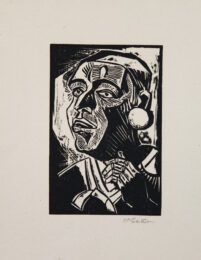


1881-1955
Hermann Max Pechstein was a German painter and graphic designer, who was born in Zwickau in 1881 and died in Berlin in 1955. He belonged to the group Die Brücke (he joined in 1996) and he is considered one of the most important representatives of German Expressionism. He mostly painted portraits, landscapes and still lifes.
Pechstein was the only member of Die Brücke to have stayed in Paris and his work was more personal compared to his contemporaries. Max Pechstein was more under the influence of Gauguin, Cezanne and finally Matisse from 1912 onwards. He discovered exoticism and primitive art during a trip to the Palau Islands between 1913 and 1914. His interpretation of primitive art is astonishingly frank and the paintings inspired by this journey are among his best (such as ‘Romnay’ now in the Museum of Marburg).
Pechstein practiced a rather brutal Expressionism, dominated by violent colours. In other paintings, such as ‘Le Bateau de Sauvage’ (1913), the influence of Cezanne can be seen in his treatment of volumes.
At the same time, his female portraits, albeit aggressive, have an authentic sensuality, which is quite rare in expressionist painting. After 1918, his style can be described as eclectic modernism. His fruitful career was disturbed by the arrival of Nazism. He was expelled from his post as a professor in Berlin, which he later resumed in 1945. Despite his superficial connections with realism, Pechstein remains one of the most romantic painters of Die Brücke.